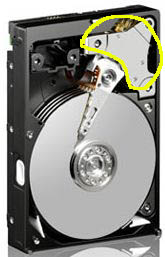
| And now we stick in the same image tag again, at 80%. Now this 80% becomes 80% of 50% of 50% |

|
What using % in an HTML width specification does
| If at any point you don't believe me, view the page source. |



|
||
| That uses exactly the same image tag (and image) as the top one | ||
Now if we define another table at 50% width, it becomes 50% of the width of the outer one, or 25% of the page width:
|
Resize your browser window by dragging the lower right corner of it, and notice that the table and image widths above
change to fit the available space (but the font stays the same size).
This image, at it's natural size, has the real width and height specified in the tag, per the HTML standard. It doesn't
resize when you change the window size. It also has an alt tag specified, which makes it the only one on this page that's
acceptable to an HTML validator.

This image doesn't have any width and height specified (an HTML validator will kick up a fuss over this), it just
appears at its natural size:

These are all links to the same image, http://www.otherpower.com/images/scimages/6871/berns_label.jpg
This is how Scoop indents things. It uses one of several HTML "list" structures and hangs the table that houses each comment off one of the items in the list. If a comment gets a comment made to it, that starts a new list, and if that comment gets a comment that starts another list, so it all gets indented more and more. With each comment going in a table and the tables hanging off an ever-indenting list, the table boxes get smaller and smaller. This makes a big difference in how an 80% width image appears.
HTML has several list types:
There's an unordered list, with bullets:
|
Simulated right side menu area |
When images get shrunk this way, you can always view them at their normal size by right-clicking on them and choosing "View Image".
A good concise guide to HTML that I've used for years is Kevin Werbach's Bare Bones Guide to HTML (no style sheet stuff though)